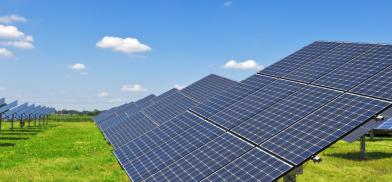India should aim to be a role model in renewable energy to mitigate climate change impact
Solar roofed buses may be handy in providing mobile primary healthcare, primary and adult education, agricultural extension services and training, even telecom and TV connectivity in rural and far-flung areas across South Asia and Africa, writes Amb Sarvajit Chakravarti (retd) for South Asia Monitor

The push being given by the Indian government for the growth and penetration of electric vehicles and gradually phasing out petroleum driven transport is very welcome. However, to succeed it must be accompanied by growth in power generation, which is still in woefully short supply, and the creation of vast, high-efficiency charging stations across the country which, to save land and road carriageway space, should preferably be designed as multistoried car parks powered by solar panelled roofs. We must augment renewable power generation facilities to the maximum to reduce diversion of fossil fuel saved by EVs to thermal power generation. That will significantly reduce our national carbon footprint.
An interesting alternative to be explored may be to make the roofs of public vehicles and trains out of solar panels to continuously charge the batteries that power the automobiles and autorickshaws. The vehicle's dynamo may also contribute to charging while it is in motion. These facilities will reduce the need for plug-in charging and extend the vehicle range. If a vehicle can be made into an EV/CNG hybrid, the need for grid power-based charging may be reduced further. There will be no need to provide covered parking for such vehicles.
Solar roofs for vehicles
Such solar roofs may be used for city and long-distance bus services and SUVs such as government transports, police and military vehicles. It may render considerable budgetary savings and even bring municipal and state bus services into profitability. Another great benefit may be in providing international road transport services and in reducing transport emitted pollution in the Himalayan and other mountain areas, including in Nepal and Bhutan.
It may induce Bhutan to reduce its difficulties with the BBIN MVA as now proposed. However, major vehicle makers such as Tata, Ashok Leyland, Mahindra, Eicher, Force and others may need to modify engine designs, especially for smaller buses and covered trucks to generate the higher torque necessary for safety on mountain roads. Over some years of their use, pollution levels in our hills will reduce dramatically.
Such solar-roofed buses may be handy also in providing mobile primary healthcare, primary and adult education, agricultural extension services and training, even telecom and TV connectivity in rural and far-flung areas across South Asia and Africa. The electricity generated can power basic diagnostic devices and telemedicine facilities to enable a doctor and technician/nurse service rural areas from a district hospital.
Solar power uses
Body fluid diagnostics, eye or dental care, CVD, diabetes and other NCDs can be done or periodically monitored without the rural patient needing to lose earnings by travelling to clinics or hospitals. Edutech companies can install 12 or 24V operated screens to provide online lessons to those unable to access or use smartphones. Computer training can be given in rural areas.
Rural banking and microfinance services can be provided. Even refrigerated logistics companies can have their refrigeration systems powered by solar operated heat exchangers, reducing wastage of produce in transportation to mandis and markets. It is possible even to operate cold storages with sufficient solar power.
Solar power can also be used for harvest and food processing by using heating elements to partially dry freshly harvested produce to increase its shelf life by passing it over a heated conveyor. This will enable the dehydrated produce to be collected and traded in bulk or retail, being rehydrated by the end user.
Dehydrating vegetables such as tomatoes and many other fruits such as berries may contribute to import substitution and increasing agricultural exports. Such solar dehydrators can be made to fit on rural tricycle vans or upscaled for larger goods vehicles.
Need for mission mode
It is necessary for the government and private sector to work in mission mode to realize the value and potential of renewable energy to be a role model and global leader in the International Solar Alliance as well as contribute meaningfully to the COP goals to mitigate climate change and its adverse effects.
To do this India must become "Atmanirbhar" (self-reliant) in the whole production chain of solar energy generation, from designing and making chips, to making, fitting up and operationalizing solar panels in innovative ways.
(The writer is a former Indian Deputy High Commissioner in Bangladesh. Views are personal)










Post a Comment